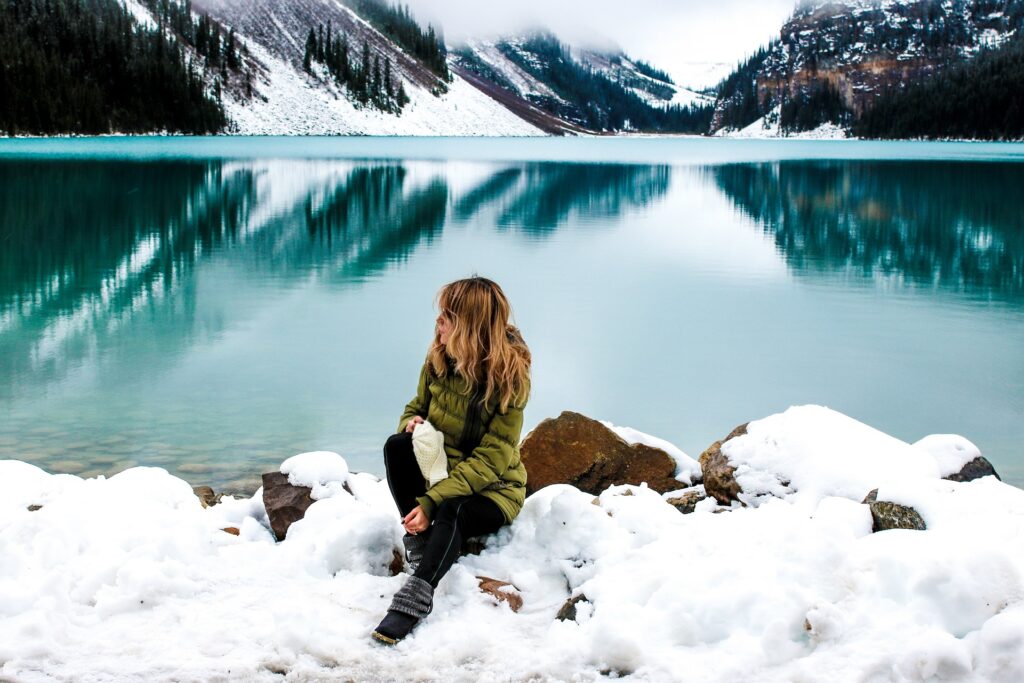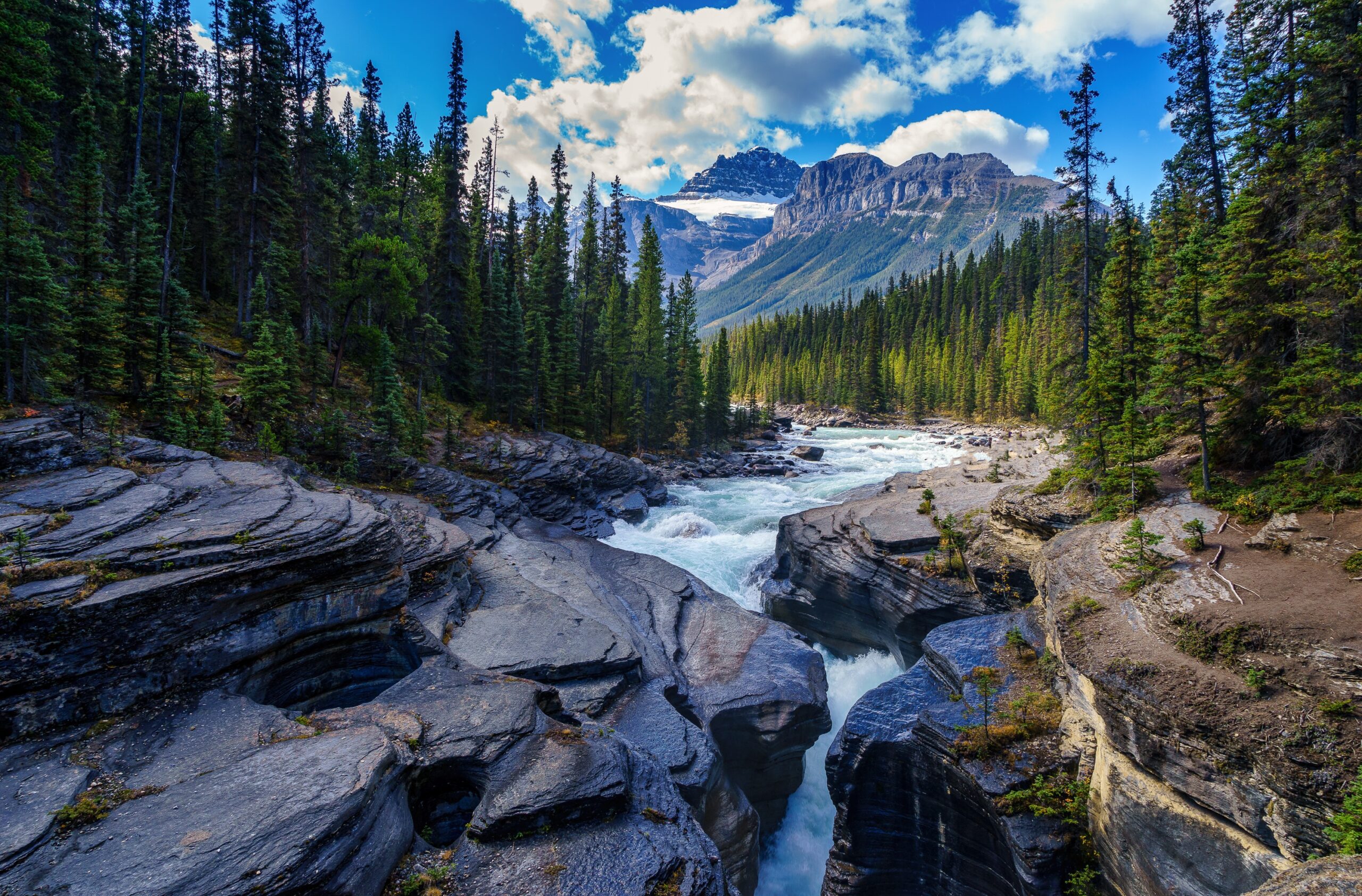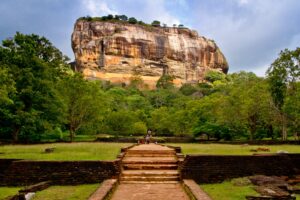Situated amidst the untamed embrace of the Canadian Rockies, Banff National Park is a tribute to the breathtaking splendor of the natural world. Founded in 1885, Banff is more than just a national park—it’s a haven of untainted nature that enthralls everyone in its immense reach. Come along for a comprehensive tour of Banff National Park, where each valley sculpted by glaciers, an azure lake, and a snow-capped peak reveal the splendor and majesty of Canada’s first and most famous national park.
An Unspoiled Wonderland
History and Heritage
Since it was created as the nation’s first national park, Banff National Park has a rich history entwined with Canadian culture. Beneath the park, the historic Banff Springs Hotel is a living reminder of when railway travellers took shelter beneath its fortress-like walls. Banff’s scenery and buildings resonate with its legacy, transporting tourists to a bygone period.
Plant and Animal Life

The ecosystems of Banff span from deep woods to alpine meadows, providing a refuge for a wide variety of plants and animals. Mountain goats, moose, elk, and grizzly bears can all graze freely in this protected area. Because of the park’s dedication to conservation, tourists may see Canadian wildlife in its native environment, adding to the preservation of heritage.
Famous Landmarks

The Ice fields Parkway, Lake Louise, and Moraine Lake are not just tourist attractions; they are legendary sites that epitomize Banff’s unparalleled beauty. The turquoise lakes fed by glaciers glisten, and the ice fields Parkway offers a breathtaking drive over high hills and an unspoiled environment. Every monument adds to the park’s history and leaves a lasting effect on those lucky to see it in all its beauty.
Outdoor Excursions
Trails for hiking

The hiking paths in Banff National Park are suitable for hikers of all skill levels and provide a close-up view of the park’s wild environments. Sentinel Pass, Johnston Canyon, and the Plain of Six Glaciers path offer distinct vantage points of the park’s natural treasures. The experience is enhanced by guided treks and interpretive programmers, which let guests learn more about the geological and ecological wonders of the park.
Lake Activities

The lakes in the park provide a playground for various water sports and are beautiful to look at. Canoeing on Lake Louise, kayaking on Moraine Lake, or a leisurely tour on Lake Minnewanka affords an intimate interaction with Banff’s water magnificence. Fishing enthusiasts can add to the immersive outdoor experience by dipping their hooks into immaculate rivers and lakes.
A Winter Wonderland

In the winter, Banff transforms into a mystical snow wonderland for snow lovers. Ice skating and ice fishing may be enjoyed on the frozen lakes, and world-class skiing and snowboarding can be found at the Lake Louise Ski Resort and Mount Norquay. The park’s snow-covered scenery creates a calm and magical setting for wintertime activities.
Encounters with Wildlife
In Banff, the winter months present a singular chance to see wildlife against a backdrop of snow. Guided wildlife trips through the park’s winter scenery allow guests to see wolves, elk, and the elusive mountain caribou. Photographers can immortalize these magnificent creatures by capturing them in their winter environment.
Cultural Exploration
Native American ancestry
The traditional lands of the Stoney Nakoda, Blackfoot, and Tsuu T’ina Nations are home to Banff National Park. The park experience is enhanced when the indigenous cultures are acknowledged and valued. Visitors can participate in cultural events, attend storytelling sessions, and buy genuine indigenous artwork to promote awareness of the close ties that bind the land and its indigenous people.
Banff Town

Banff town is situated amidst the park and provides a lively fusion of dining, shopping, and culture. Cultural information is available via the historic Banff Park Museum, the Banff Centre for Arts and Creativity, and neighborhood galleries. A visit to one of the town’s well-known eateries or a stroll along the energetic streets enhances the Banff experience by bringing tourists closer to the region’s colorful culture.
Preservation and Ecological Balance
Preserving Measures
More than just a place to visit, Banff National Park is a dedication to protecting the environment for coming generations. Initiatives for sustainable tourism, habitat restoration, and animal management are examples of ongoing conservation activities. Parks Canada makes a concerted effort to maintain a healthy coexistence between human activity and the natural environment by balancing visitors’ requirements with the long-term health of the park’s ecosystems.
Conscientious Travel
It is imperative to observe responsible tourism practices when visiting Banff National Park. To reduce environmental impact, respect wildlife, leave no trace, and stick to established pathways. Choosing eco-friendly lodging, using eco-friendly transit modes, and patronizing neighborhood businesses help the park’s conservation efforts. Visitors are essential to guarantee that Banff’s pristine landscapes are preserved for future generations.
Summary
With its timeless vistas and diverse activities, Banff National Park goes beyond what is typically associated with a typical tourism destination. It is a refuge where the pure melodies of nature blend with the echoes of history, beckoning guests to take up the mantle of stewardship over its legacy. When you hike its trails, canoe its lakes, and immerse yourself in Banff’s rich cultural heritage, you join a centuries-old narrative of preservation, admiration, and a steadfast dedication to safeguarding the unparalleled splendor that characterizes this wilderness gem. Banff National Park is more than simply a place to visit; it’s an invitation to get in touch with the natural world, discover the depths of Canada’s untamed wilderness, and leave a legacy of preservation for future generations.



